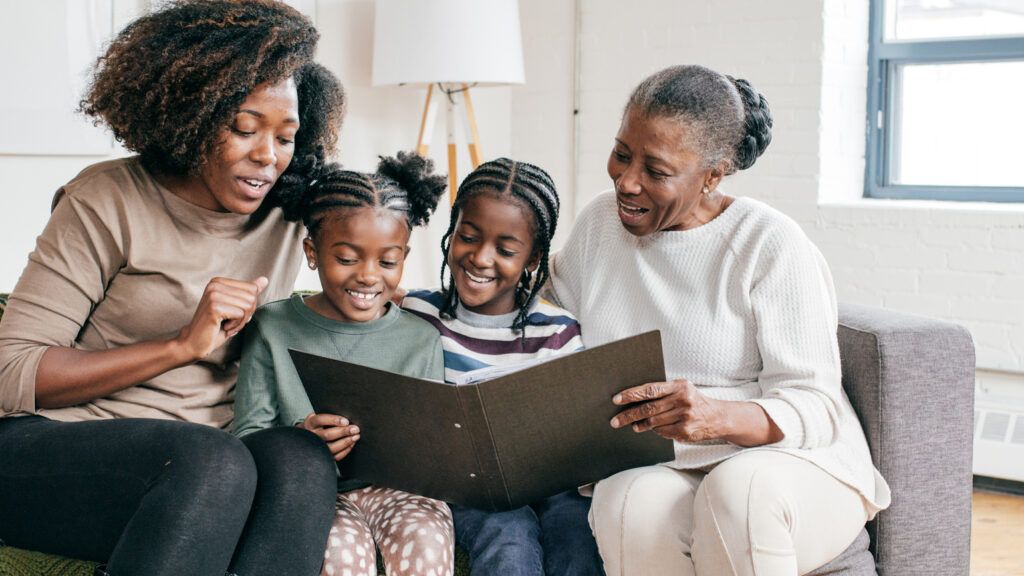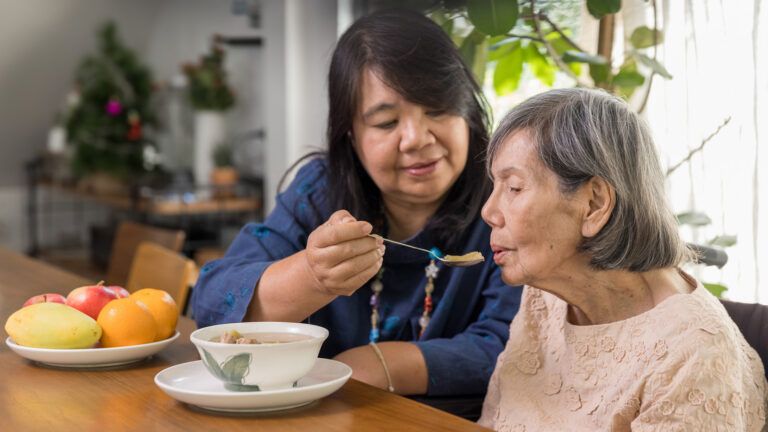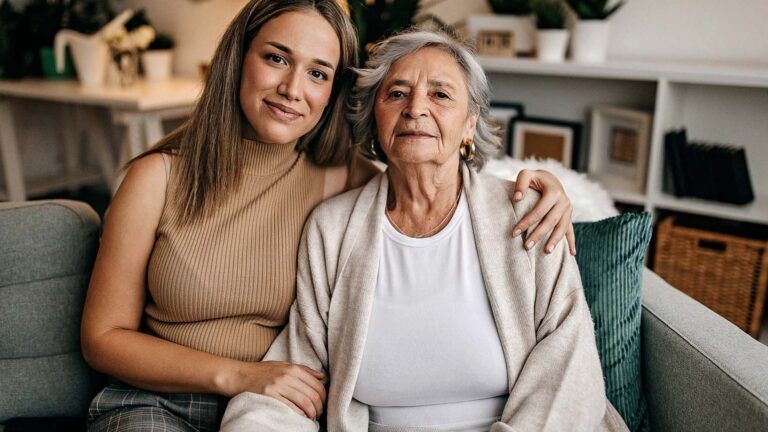Julie Hayes is the Editorial Assistant at Benjamin Rose Institute on Aging.
There is nothing like the moment at a family gathering when someone shares a particularly funny or poignant memory, and it triggers another, and that leads to another, and before you know it, the family has spent hours swapping tales. Without a recording device on hand, however, these valuable stories are eventually lost to time. When our older loved ones are doing the reminiscing, the importance of capturing and saving the stories feels especially urgent. This is not only because we have limited time in which to record the memories of our older loved ones. They also have much to tell us about the history they have witnessed, lessons they have learned and personal experiences that may be just plain fascinating.
Research shows that engaging in reminiscence and storytelling with a loved one can improve their mental, psychological and emotional health, while also helping caregivers personalize their caregiving and improve their connection and communication with their loved one.
You can choose from a variety of techniques to engage your loved one in reminiscence and then capture the stories for safekeeping. Finding the right method for you may come down to the capabilities of your older loved one, as well as the time and resources you have. The following are four helpful approaches:
1. Explore Life Story Programs
A variety of programs now exist to give you assistance and direction in coming up with questions, creating recordings and managing your reminiscence project. They offer tools such as online templates, memory books and professional interviewers and transcribers. One example is LifeBio, a program that supports reminiscence therapy and is the subject of a current Benjamin Rose Institute of Aging research project. LifeBio can make it simpler for you and your loved one to write and collect memories through the use of autobiography templates and memoir writing services. Research also shows that life story programs can lead caregivers to provide more personalized and empathetic care whether they are family members, friends or professionals (Grøndahl VA, Persenius M, Bååth C, Helgesen AK. The use of life stories and its influence on persons with dementia, their relatives and staff – a systematic mixed studies review. BMC Nurs. 2017).
You may also choose to get your loved one involved in group reminiscence therapy at a senior center, assisted living facility or adult day program. Many of these places offer such story-telling activities, which allow older adults to share memories with others. It is also a great way for them to simply socialize and make new friends.
2. Create a memory book
Build on the idea of a photo album or scrapbook by adding written memories to the visuals. You can start by questioning your loved one about significant life moments and precious recollections. What is your first memory? What are you proudest of? If you need help thinking of questions to ask, there are many examples available online, including prompts from the National Caregiving Foundation. Try to find old family photos to go along with the stories, and then print out copies and add them to the memory book as an enhancement.
If your loved one is able to write or type, encourage him or her to put down the stories using these methods, as research shows that writing and journaling can help to reduce stress and improve overall wellness. However, if your loved one has a condition that makes it impossible to write safely or legibly, you can write down the stories yourself.
3. Record your stories to audio
An audio recording is a wonderful alternative to writing, especially when your loved one is unable to put pen to paper. Audio recordings can both preserve an exact telling of someone’s stories and allow for replaying, sharing and spreading the stories to others, no matter how far away they may be. Many caregivers also treasure having a recording of their loved one’s voice as a keepsake.
4. Encourage younger generations to gather memories
Sharing life stories is of value to people of all ages. Research on intergenerational reminiscence programs indicates that youth participants generally report positive responses and deeper connections to the older adults in their lives after listening to their life stories, while older adults report improved quality of living and a greater sense of overall happiness after sharing their stories with younger adults (Chung JC. An intergenerational reminiscence programme for older adults with early dementia and youth volunteers: values and challenges. Scand J Caring Sci 2009;23:259–64).
If your loved one has grandchildren or other younger family members, encourage them to get involved in eliciting stories by posing life story questions when they visit. You could also have your loved one share a memory book or photo album with them. Bridging the age gap doesn’t have to be limited to people with younger relatives. If your loved one is up to it, get him or her in touch with any number of schools, libraries and senior centers that offer intergenerational programs with local children and student volunteers.





